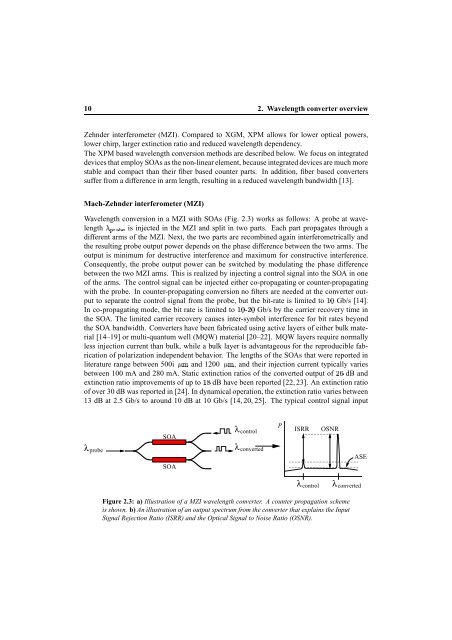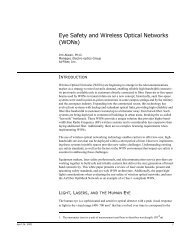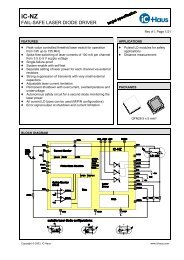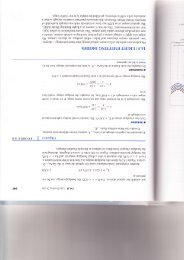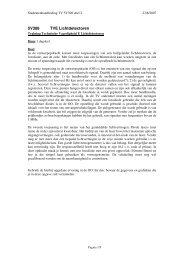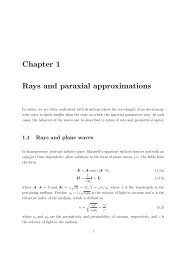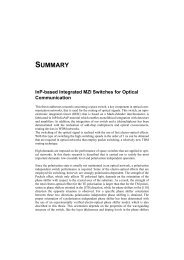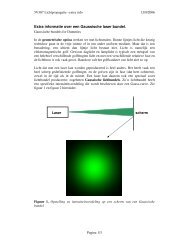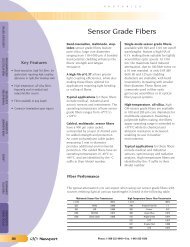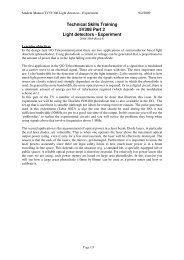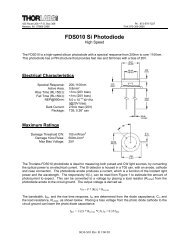A Wavelength Converter Integrated with a Discretely Tunable Laser ...
A Wavelength Converter Integrated with a Discretely Tunable Laser ...
A Wavelength Converter Integrated with a Discretely Tunable Laser ...
Create successful ePaper yourself
Turn your PDF publications into a flip-book with our unique Google optimized e-Paper software.
10 2. <strong>Wavelength</strong> converter overview<br />
Zehnder interferometer (MZI). Compared to XGM, XPM allows for lower optical powers,<br />
lower chirp, larger extinction ratio and reduced wavelength dependency.<br />
The XPM based wavelength conversion methods are described below. We focus on integrated<br />
devices that employ SOAs as the non-linear element, because integrated devices are much more<br />
stable and compact than their fiber based counter parts. In addition, fiber based converters<br />
suffer from a difference in arm length, resulting in a reduced wavelength bandwidth [13].<br />
Mach-Zehnder interferometer (MZI)<br />
<strong>Wavelength</strong> conversion in a MZI <strong>with</strong> SOAs (Fig. 2.3) works as follows: A probe at wavelength<br />
is injected in the MZI and split in two parts. Each part propagates through a<br />
different arms of the MZI. Next, the two parts are recombined again interferometrically and<br />
the resulting probe output power depends on the phase difference between the two arms. The<br />
output is minimum for destructive interference and maximum for constructive interference.<br />
Consequently, the probe output power can be switched by modulating the phase difference<br />
between the two MZI arms. This is realized by injecting a control signal into the SOA in one<br />
of the arms. The control signal can be injected either co-propagating or counter-propagating<br />
<strong>with</strong> the probe. In counter-propagating conversion no filters are needed at the converter output<br />
to separate the control signal from the probe, but the bit-rate is limited to ¤ Gb/s [14].<br />
In co-propagating mode, the bit rate is limited to ¤ - Gb/s by the carrier recovery time in<br />
the SOA. The limited carrier recovery causes inter-symbol interference for bit rates beyond<br />
the SOA bandwidth. <strong>Converter</strong>s have been fabricated using active layers of either bulk material<br />
[14–19] or multi-quantum well (MQW) material [20–22]. MQW layers require normally<br />
less injection current than bulk, while a bulk layer is advantageous for the reproducible fabrication<br />
of polarization independent behavior. The lengths of the SOAs that were reported in<br />
literature range between 500i and 1200 , and their injection current typically varies<br />
between 100 mA and 280 mA. Static extinction ratios of the converted output of dB and<br />
extinction ratio improvements of up to ¤ dB have been reported [22, 23]. An extinction ratio<br />
of over 30 dB was reported in [24]. In dynamical operation, the extinction ratio varies between<br />
13 dB at 2.5 Gb/s to around 10 dB at 10 Gb/s [14, 20, 25]. The typical control signal input<br />
λprobe<br />
SOA<br />
SOA<br />
λcontrol<br />
λconverted<br />
P<br />
ISRR OSNR<br />
λcontrol<br />
ASE<br />
λconverted<br />
Figure 2.3: a) Illustration of a MZI wavelength converter. A counter propagation scheme<br />
is shown. b) An illustration of an output spectrum from the converter that explains the Input<br />
Signal Rejection Ratio (ISRR) and the Optical Signal to Noise Ratio (OSNR).


